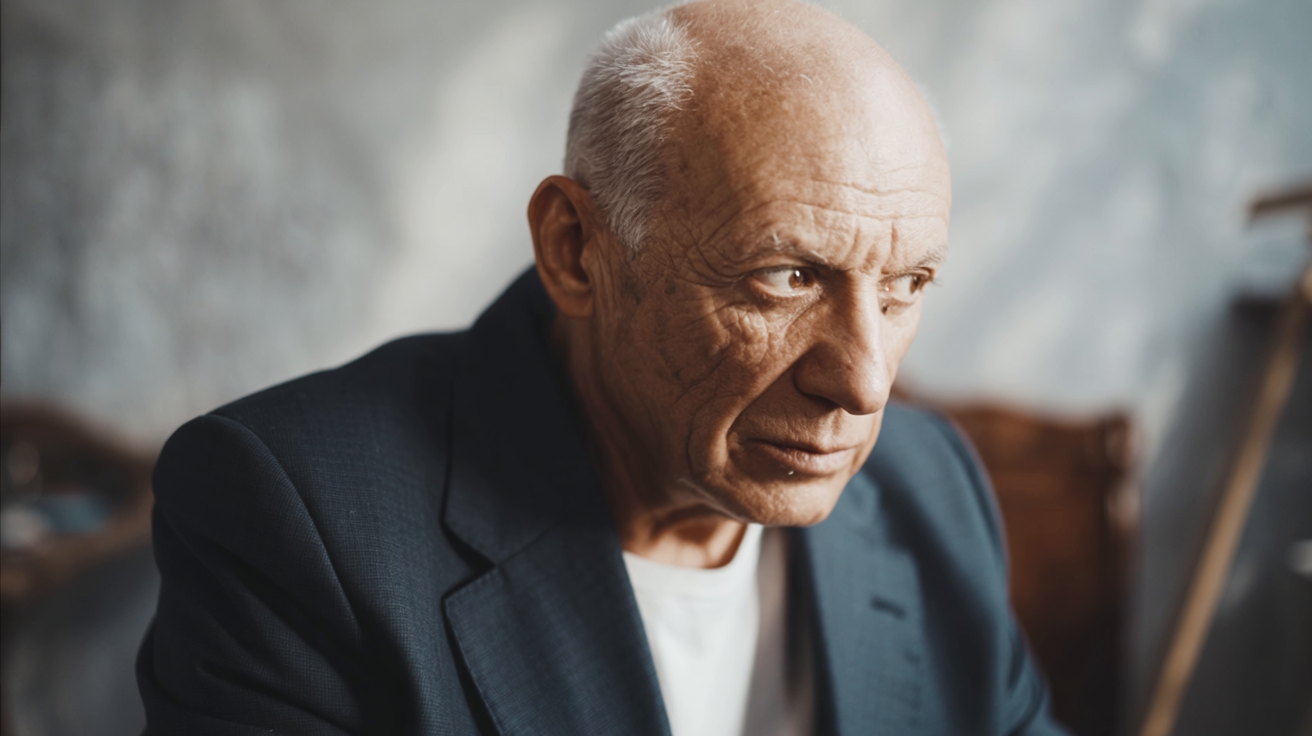Introduction
Pablo Picasso, a name synonymous with artistic revolution, left his mark on art history with his unparalleled genius. From his earliest sketches to his Cubist canvases, each work reveals a facet of his tormented and visionary soul. But what secrets lie behind this undisputed master? How did he overturn artistic codes to redefine beauty?
This article invites you to explore Picasso's life, influences, and techniques, while deciphering his lasting impact on modern art.
Ready to dive into the captivating world of this prodigy?
1. The Life and Childhood of Picasso: The Roots of a Genius
Born in 1881 in Malaga, Spain, Pablo Picasso showed exceptional talent for drawing at an early age. His father, an art teacher, recognized his potential and encouraged him to paint from a young age. At just 8 years old, he created his first work, The Little Yellow Picador .
-
Early training : Admitted to the Barcelona School of Fine Arts at the age of 14, Picasso quickly mastered classical techniques.
-
Tragedy as a catalyst : The death of his sister, Conchita, had a profound impact on him and influenced his artistic approach.
Why it matters : Understanding his childhood helps us grasp the emotions that fueled his art, from dark periods to explosions of color.
2. Picasso's Artistic Periods: A Fascinating Evolution
Picasso never confined himself to a single style. His work is divided into several distinct periods:
-
Blue Period (1901-1904) : Dominated by melancholic tones, reflecting poverty and solitude ( Life , The Old Guitarist ).
-
Rose period (1904-1906) : Love and the circus inspire gentler works ( Family of saltimbanques ).
-
Cubism (1907-1920) : With Les Demoiselles d'Avignon , he revolutionized art by breaking down forms.
-
Surrealism and beyond : His style evolves towards expressive distortions ( Guernica ).
Did you know? Picasso produced more than 50,000 works during his lifetime, an unmatched record.
3. The Influences That Shaped His Work
Picasso drew his inspiration from various sources:
-
African art : Tribal masks influenced Cubism.
-
Cézanne and the old masters : He reinterprets their techniques with audacity.
-
War and love : His tumultuous relationships (such as with Dora Maar) and global conflicts mark his creations.
4. Analysis of Emblematic Works
-
Guernica (1937) : A powerful denunciation of war, a universal symbol of suffering.
-
The Young Ladies of Avignon (1907) : A radical break with traditional perspective.
-
The Weeping Woman (1937) : Reflection of his passionate relationship with Dora Maar.
5. Picasso and Cubism: An Artistic Revolution
With Georges Braque, Picasso invented Cubism, fragmenting reality to offer a multidimensional vision.
Impact : This innovation paved the way for abstract art and influenced generations of artists.
6. Picasso's Legacy in the Contemporary World
-
Influence on street art (Banksy, Basquiat).
-
Sales records : Women of Algiers sold for $179 million in 2015.
-
Dedicated museums : The Picasso Museum in Paris and Barcelona celebrate his genius.
Conclusion: Picasso, a Timeless Visionary
Picasso was not just an artist, but a visionary who pushed the boundaries of creativity. His legacy endures, inspiring amateurs and experts alike. What can we learn from his career? Art thrives on audacity, emotion, and a desire to break conventions.
Pablo Picasso (1881-1973)

